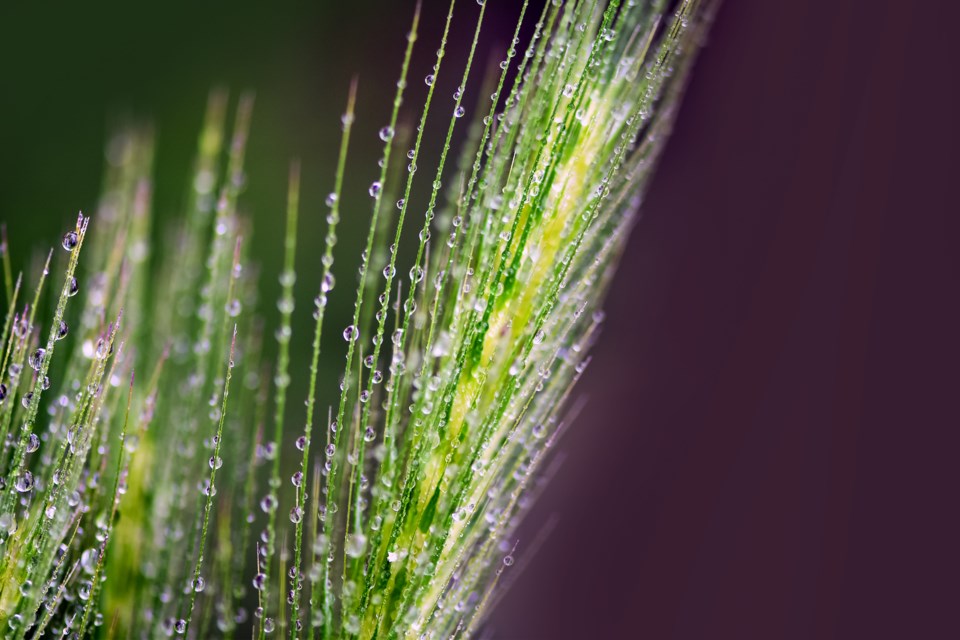EAST CENTRAL — Many areas in the province received rainfall from June 18 to 24.
This precipitation has helped to relieve the extremely dry conditions and recharge soil moisture; however, significant rainfall is still needed in areas of the province to help crops, hay and pasture develop and further recharge soil moisture.
Northeastern Saskatchewan
Rain fell across the region this past week, ranging from 20 millimetres in the Garrick and Spruce Home areas to up to 64 millimetres in the Humboldt area. The Hudson Bay area received 25 millimetres, the Arborfield area 22 millimetres, the Birch Hills area 28.4 millimetres and the Vonda area 52.7 millimetres. The Melfort area has received the most precipitation since April 1 (174 millimetres).
Topsoil moisture conditions have improved from the moisture. Cropland topsoil moisture is rated as seven per cent surplus, 92 per cent adequate and one per cent short. Hay land and pasture topsoil moisture is rated as two per cent surplus, 84 per cent adequate, 11 per cent short and three per cent very short. Crop District 8A is reporting that 96 per cent of cropland and 72 per cent of hay land and pasture have adequate topsoil moisture at this time.
Though moisture was received, there have been indications that some crops, hay land and pasture have lost yield potential. The first cut of hay will be reduced, but a later, second cut looks promising. The germinating shallow-seeded crops are now depending on good fall weather as their maturity will be late and there are fields with multiple crop stages in them, which will cause some difficulty for crop staging and harvest.
Crops in the region are mostly at their normal stages of development. Seventy-seven per cent of the fall cereals, 72 per cent of the spring cereals, 52 per cent of the oilseeds and 75 per cent of the pulse crops are at their normal stages of development for this time of year. Some of the crops in the region are behind in growth, particularly the oilseeds. Eight per cent of the fall cereals, 24 per cent of the spring cereals, 47 per cent of the oilseeds and 22 per cent of the pulse crops are behind in crop development.
Farmers are busy hauling grain, making in-crop herbicide applications and getting ready for haying.
East Central Saskatchewan
Varying amounts of rainfall fell in the region this past week, ranging from 11 millimetres in the Roblin, Man., area to 89 millimetres in the Lumsden area. The rain is very beneficial to the crops, hay land and pastures and will recharge a parched topsoil, but more rain will be needed to carry the crops to harvest and to recharge the subsoil. The Lipton area received 38 millimetres, the Kelliher area 63 millimetres, the Kelvington area 20 millimetres, the Stalwart area 63 millimetres and the Meacham are 54 millimetres. The Ituna area has received the most precipitation since April 1 (177 millimetres).
Topsoil moisture conditions have significantly improved from the rainfall. Cropland topsoil moisture is rated as six per cent surplus, 81 per cent adequate, 12 per cent short and one per cent very short. Hay land and pasture topsoil moisture is rated as three per cent surplus, 75 per cent adequate, 18 per cent short and four per cent very short. Crop District 5A is reporting that 71 per cent of cropland and 75 per cent of hay land and pasture have adequate topsoil moisture at this time.
Though the moisture was welcome, some of the early seeded crops and hay land will not recover and yield losses are expected; however, a second, late cut of hay is expected. The pastures and late-seeded crops will benefit the most from the rainfall. Producers have also indicated that some are seeding cereals crops for feed. The moisture has also created a few issues for producers, particularly crops at two stages within a field, late weed flushes and crops that are germinating now that will have late maturity.
Crops are behind their normal developmental stages for this time of year, but the rainfall and warm weather are expected to move crops along in their development. Forty-one per cent of the fall and spring cereals, 31 per cent of the oilseeds and 54 per cent of the pulse crops are at their normal stages of development for this time of year. Fifty-three per cent of the fall cereals, 57 per cent of the spring cereals, 68 per cent of the oilseeds and 43 per cent of the pulse crops are behind in crop development.
Farmers are busy controlling pests and getting ready for haying.
The crop report is provided each week by the Government of Saskatchewan




